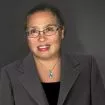Beginning in 2024, SECURE 2.0 significantly changes the rules for catch-up contributions. Section 603 of SECURE 2.0 requires plans that permit catch-up contributions to accept catch-up contributions from participants who earned more than $145,000 in the prior year only on a Roth basis. The new requirement applies to 401(k), 403(b) and governmental 457(b) plans. The provision also requires plans to permit all participants to make Roth catch-up contributions if any participant in the group is required to do so.
Although the majority of non-governmental plans already permit Roth contributions, there is no precedent for this new requirement and a great deal of confusion about plan sponsor options for compliance. Some plan sponsors, in fact, are considering whether to eliminate catch-up contributions in order to avoid the new complexity, though that may not be popular with participants. Who exactly is covered, and will special elections be required? How will this new requirement interact with existing rules?
Here are some of the issues that arise in interpreting the new requirement---
- Can a plan with existing catch-up contributions eliminate them rather than accept new recordkeeping requirements?
- Can a plan require that all catch-up contributions be made only on a Roth basis?
- If no one in the eligible group actually makes a catch-up contribution, must other participants still be given the right to make Roth catch-up contributions?
- How will this rule be applied to multiple employer plans in which unrelated employers participate? Will each employer look only to its own employees, as is currently done for non-discrimination compliance?
- Although most of the plans subject to the new catch-up requirement currently have Roth options, not all of them do. Can a plan currently without a Roth option adopt Roth provisions solely for catch-up contributions?
- What happens if there is an inadvertent error in calculating the prior year compensation that is only discovered later?
- Can employers in multiple employer plans make individual elections about how to comply with these provisions?
- How will these rules apply to plans in the same controlled group?
- Both 403(b) plans and 457(b) governmental plans have existing special catch-up rules. How does the new requirement affect those existing catch-up rules?
- SECURE 2.0 measures whether compensation exceeded $145,000 by reference to FICA wages in Code section 3121(a). Does the Roth catch-up contribution requirement also apply to participants who are self-employed, such as partners in a partnership?
Analyzing plan sponsor options and converting recordkeeping systems to comply with the new Roth catch-up contribution requirement will take time. Many organizations, including the American Benefits Council and the SPARK Institute, have filed comments requesting Treasury to issue prompt guidance answering basic compliance questions about the new Roth requirement that are not answered in the statutory language.
It is encouraging that Treasury recently issued Notice 2023-43 clarifying application of the new SECURE 2.0 self-correction rules. Guidance under the Roth catch-up provision should also be at the top of any Treasury to-do list. All plan sponsors, recordkeepers and administrators should be on the lookout for this guidance and prepared to make the necessary decisions needed before 2024.
The content of this article is intended to provide a general guide to the subject matter. Specialist advice should be sought about your specific circumstances.
We operate a free-to-view policy, asking only that you register in order to read all of our content. Please login or register to view the rest of this article.

